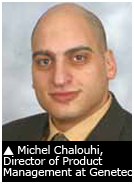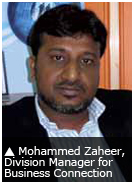Preferences

Industry estimates show the product split as 46 percent (with a larger IP portion compared to mature markets) on video, 20 percent on fire detection and alarm, and the rest split between intrusion detection and access control, according to Timperman. Sources indicated that the regional market for IP-based surveillance hardware alone could be as much as $200 to $300 million a year.
“Typical Gulf mentality is such that specifications for government or other large-scale projects like oil/gas can only be met by larger US or European brands, whereas specifications for smaller, private projects can be met by Asian brands,” said Ali Boussi, Business Development Manager at Business Automation and Security Systems. Awareness is on the rise, though, and many vendors are closing the gap between the two “classes” by launching fuller, newer product lines.
Such sweeping changes have also been noticed by Panasonic Marketing. “To say that competition is tough is an understatement. Three years ago, we only had to fight with US and European brands, but now players like CNB and Hikvision are also competing bids with us,” said Noriyuki Hayashi, Sales and Marketing Manager for System Solutions in the Middle East. Ability to deliver quality-assured, total turnkey solutions in a cost-effective and timely manner is now a key differentiator. With its local engineers and merger synergy with Sanyo, the company can quickly target sectors such as government/ commercial buildings, universities and hotels in Saudi Arabia and the United Arab Emirates (UAE), which account for 70 percent of its business in the region.
 Aside from adopting cutting-edge hardware, an “IT” mindset also needs to be instilled. “The industry still needs to learn a little bit as the full potential and opportunities of IT, such as service and maintenance models, are not seized,” said Peter Biltsted, Sales Director for the Middle East, Africa, India, Australia and New Zealand, Milestone Systems. “People need assurances if your solutions are used at critical infrastructure like government buildings, airports, seaports, power plants and military bases. IT people are good at these, and we are an IT company in the security space.” More than 50 percent of growth was estimated as the various regional conflicts continue to unfold and large-scale projects continue to pull through.
Aside from adopting cutting-edge hardware, an “IT” mindset also needs to be instilled. “The industry still needs to learn a little bit as the full potential and opportunities of IT, such as service and maintenance models, are not seized,” said Peter Biltsted, Sales Director for the Middle East, Africa, India, Australia and New Zealand, Milestone Systems. “People need assurances if your solutions are used at critical infrastructure like government buildings, airports, seaports, power plants and military bases. IT people are good at these, and we are an IT company in the security space.” More than 50 percent of growth was estimated as the various regional conflicts continue to unfold and large-scale projects continue to pull through.
Another issue raised by many was cultural issues — a side effect from how consumer electronics are usually distributed in the region. “A lot of resellers here only want exclusives,” said Hidenori Taguchi, Head of Marketing for B2B Products and Solutions, Sony Professional Solutions. “On the other hand, we would like to see the IT/networking and security channels compete more to grow the market. The project-based nature of most installations also means working with system integrators more closely, which explains the limited number of distributors and resellers you see on the show floor.” For Sony and many others, devising, incorporating, fostering and increasing solution-based business (rather than silo products) will be one of the most important objectives and challenges for the many years to come.
Other product groups of focus include homeland security, as reported by the Homeland Security Research Corporation that spending on homeland security in the UAE alone is expected to double from roughly $5.5 billion to $10 billion in the next few years.